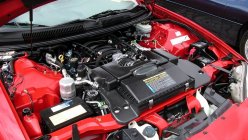How to cool off your car before driving
As we’ve established in our previous tips and guide articles here on Philkotse.com, extremely hot temperatures and combustion engines do not mix.
Why? Because when air is heated up, it becomes less dense and as a result, is less effective in supplying the needed oxygen to burn fuel.
This then results in less horsepower and “fewer smiles” per liter. This is why high-performance engines will need things like an air-cold intake, and a turbo-intercooler in order to keep the air as dense as possible.

"My car's an old dog but I want to go to BALLLEERRR" - Some vacationer...probably
For us normal folks with normal cars, this loss of performance when experiencing high temperatures can also be felt. When it’s actually overheating, however, it’s definitely no less a source of headaches.
This is especially true during the summers, which we all know are getting hotter and hotter by the year. This particular car issue is also further compounded when driving on long distances here in the Philippines.
And we all know Philippine summers…despite the heat, it’s the time to take a break from work and take a dip in a beach somewhere, far away from the struggles of life in the city.

When it’s actually overheating, however, it’s definitely no less a source of headaches
So how do you cool down your car’s engine before driving on your merry way? Here are some useful tips from us to you!
Note: These tips are for trying to cool hot cars and NOT overheating cars. Read on further below for how to address overheating.
>>> You might concern: Deal with summer: Have you known all popular problems with cars in summer?
1. Park your car under the shade
On the hottest days in the Philippines, the average temperature can reach up to 40 °C. So, like you or me, your car will definitely get cooler if parked away from the scorching heat of the sun.
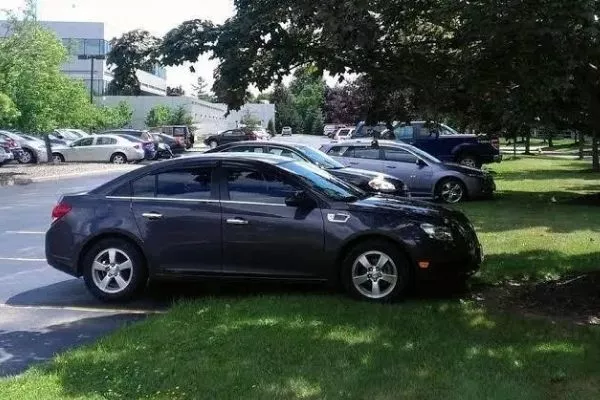
Sounds simple but this will help a lot
Apart from cooling it faster, this will also help in keeping the lifespan of your car’s interior, and of course, it’s paint. If the parking spot isn’t shady enough, then at least use a sunshade.
>>> Make sure you know:
2. Keep your eye on your temp gauge
In many modern cars available in the Philippines today, their instrument clusters will usually include a temperature gauge. This device works by measuring the temperature of your car’s coolant by way of sensors located near the radiator.
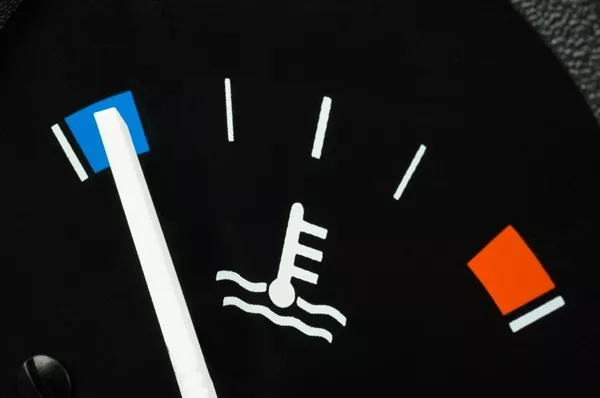
Their instrument clusters will usually include a temperature gauge
In air-cooled cars like the Volkswagen Beetle, these come with a cylinder head temperature gauge or CHT. Others will also have an exhaust gas temperature gauge but this is mostly applied on cars with forced induction.
3. Turn on the heat
This might sound unintuitive but turning on your car’s onboard heater will actually draw air away from the engine compartment, therefore, cooling the engine. Sure, this is only a temporary fix, but it’s a useful strategy especially when driving long distances.
4. Remove your hood
If you have a lot of spare cargo space, then why not drive around with your hood open?
This is an age-old trick by crusty old veterans from the hot-rodding community where they remove the hood and actually drive around without said hood.
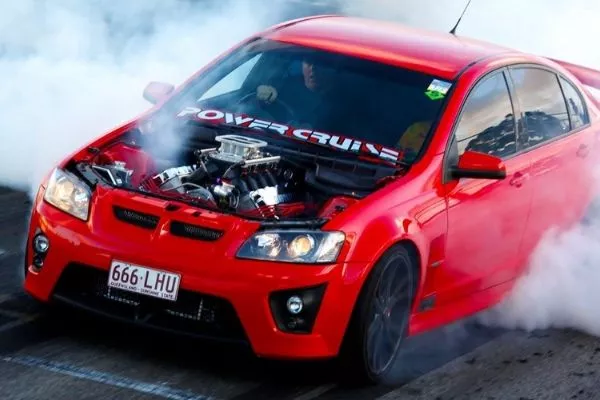
Australians are particularly fond of doing this. Note though that it isn't legal in some places
Sure, there’s actual hood venting but the absence of a hood will actually provide more air. Note though that your car won’t be as aerodynamic as it is normally but that beats having to deal with engine overheating.
5. Top up on your coolant
Another reason as to why your temp-gauge is slowly climbing up is your coolant levels might actually below. To solve this, simply add more coolant. For actual prevention; regularly check your coolant levels.
NOTE: Never try to open your radiator when your engine is still hot.
>>> Read more:
- Distilled water vs Coolant: Which is the best product for your radiator?
- Car maintenance: How to check the engine's good coolant level
6. Radiator flush
If your temp-gauge still climbs up to hot on the regular, then you should consider a radiator flush. Coolant, after all, does wear out over time and eventually, radiators will also get dirty and will collect sediment either through rust.
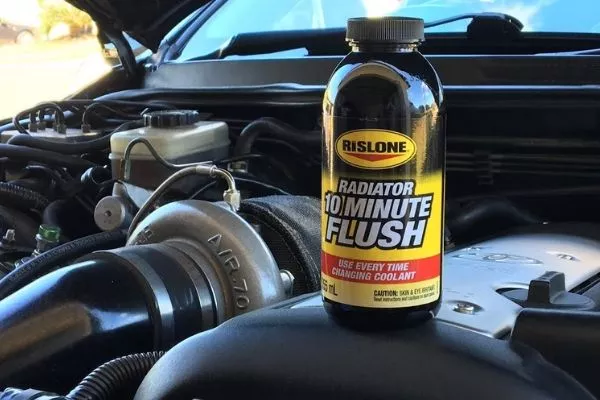
It's not just draining the coolant but you also need something to completely clean off insides of your radiator
Also, coolant is optimal when kept in a “higher-than-atmospheric” temperature, hence, its default setting is always high pressure. That, however, will have consequences with the radiator’s parts in the long run. As such, you should also check for leaks.
What if my car overheats?
In some extreme cases when the coolant has either vaporized and/or leaked away, a car’s engine will overheat.
This scary situation can cause a number of even scarier problems like warped cylinder heads, cracked cylinder heads, cracked engine block, blown head-gaskets, or a combination of all the above.
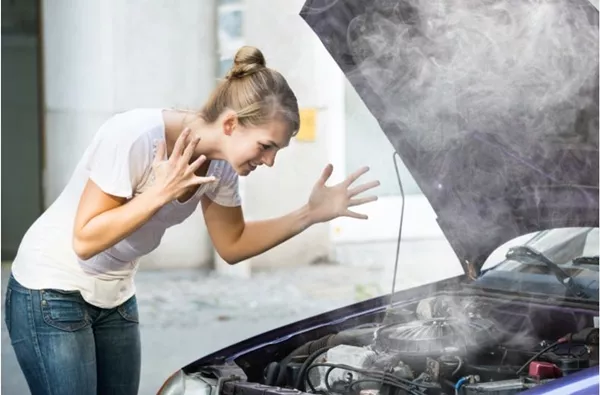
The coolant has either vaporized and/or leaked away, a car’s engine will overheat
In most cases, this will occur without warning simply because typically, a car’s temperature sensor gathers its data from water vapor, not from the liquid coolant itself.
Signs of engine overheating include reduced engine power, the hood is hot to the touch, ticking noise, burning smell, leaking coolant, and of course, the dreaded steam creeping out from your car’s hood.
>>> Relevant article: What to do if your car overheats: 10 must-know things for Pinoy drivers
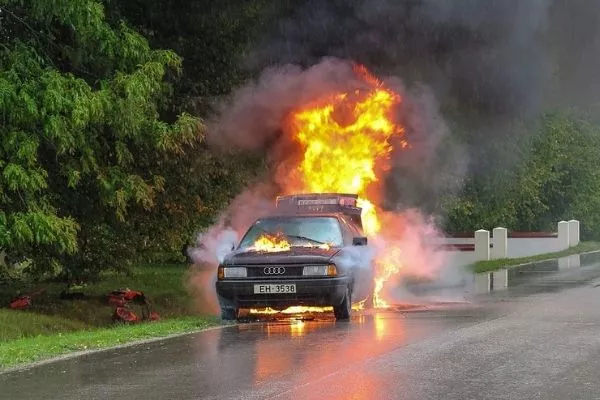
In some extreme cases, an overheating car will catch fire
So, if this happens to your car, here are some steps you can do to prevent further damage;
1. Turn off your AC
If you can’t pull over immediately, then turn off your car’s air-conditioning to reduce stress on the engine. If your car has a heater (which is strange here in the Philippines), then turn it to the maximum.
2. Pullover
If you finally found a safe spot, then pull-over, and turn off your engine. If it’s just on the side of a road, then you might want to deploy your early warning device. Wait for 15 minutes then check your car’s temp gauge again.
Also, you might want to save a tow truck company’s number in advance because the damage to your engine might be worse than you think.

3. Check coolant levels
If you’re confident that your engine has cooled down, then check your coolant levels. If your radiator’s bone dry, then try topping it off. Also, observe if any of the coolants is leaking.
4. Go on your not so merry way
If your car actually starts, then you can continue driving. We highly recommend heading to a nearby car repair shop though.
Also, pay close attention to your car’s temperature gauge because it might overheat again. If that happens, then repeat steps 1 to 4.
>>> Suggested for you: 6 must-know facts about car engine temperature for a proper use

If your car actually starts, then you can continue driving
What NOT to do if your car overheats
1. Do not continue driving
This will exponentially increase the chance of incurring damage to your car’s engine.
2. Do not open the hood and the radiator cap immediately
If you’ve managed to find a good, safe spot to stop, then we highly advise refraining from opening the hood. This might cause a great ball of steam to escape and that’ll surely hurt.
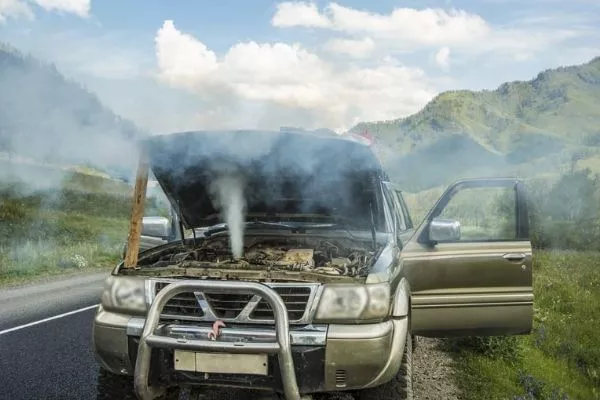
Sometimes, steam will immediately jet out after opening the hood and that WILL HURT
Cooling your car down before driving: Conclusion
We hope that you’ve learned what you needed to know from this article. As we’ve stressed in past articles however, prevention is always better than the cure.
As such, we highly advise you to be diligent with your car’s preventive maintenance schedules. Apart from these tips we’ve provided you, always calm down and be patient and don’t give in to panic.
>>> Worth reading: 3 must-know tips to cool down your car as quickly as possible in the summer

As we’ve stressed in past articles, however, prevention is always better than the cure
Panicking will only turn you into a dangerous obstacle on the road and you do NOT want that on your hands.
For more tips and tricks in dealing with car problems, keep reading here on Philkotse.com.
Recent posts
- Beat the heat: 8 tips to prevent your car from overheating Jul 18, 2019
- 5 essential car gadgets to beat the summer heat Apr 22, 2019
- Summer 2019: 10 essential car gadgets for your next road trips in the Philippines Jan 25, 2019
- Driving 101: Preparing your ride for summer vacation! Jan 10, 2019
- 3 must-know tips to keep your car’s AC system healthy in summer Feb 19, 2019


